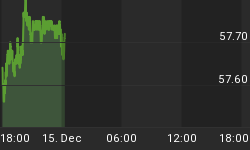The past few weeks have seen stocks and commodities (notably gold and silver) take a beating. After peaking in May (April in the case of the NASDAQ), several major indices have declined to lower lows and most recently hit lows for the year on Tuesday, June 13.
The culprit behind this decline, as we'll discuss in this commentary, is the 8-year cycle. This important cycle is due to bottom in September. Since we're less than three months from the next 8-year bottom it will do us well to examine the path that the previous 8-year cycle took back in the spring and summer of 1998 (commensurate with our current position within this cycle).
That time frame in 1998 has a lot in common with 2006. In the first half of 1998 a number of stock market indices made new all-time highs as the late '90s bull market was entering its final peak stage before ending in 2000. For instance, the Russell 2000 small cap index and the S&P 400 mid cap index both made a new high in April '98. So did the Dow Jones Transportation Average. Fast forward to this year and we find that once again the Russell and the Transports made new highs earlier this spring. In '98 several major stock market indices made their highs in April or May of that year. Perhaps not coincidentally the new highs of this year in several indices were also made in the April-May time frame.
Some interesting comparisons can be made to this present market with the comparable time frame during the 8-year cycle bottom year of 1998. In May of '98 the Dow topped out just as it did in May of this year. It slid off in May and then had a mini-collapse in the early part of June which took the Dow down to touch its 144-day moving average (Fibonbacci significance). This in turn was followed by an oversold rally beginning by the middle of June '98 which took the Dow back up to its May high and even slightly above it. This was followed by a reversal in July followed by the August collapse into the 8-year cycle low in September.
Below you will see a replay of the 8-year cycle bottoming process as experienced by the S&P 400 Midcap index (MID), which is an important broad market benchmark and often serves as a leading indicator to the larger cap indices.

A word about the 8-year cycle itself is in order. The 8-year cycle is a composite of the 2-year cycle, which bottoms in even numbered years. It's a component of the Kress 120-year cycle series with a total of 15 of these 8-year cycles within a given 120-year cycle (the most recent 120-year cycle began in 1894 and is due to bottom in 2014). The 8-year cycle tends to bottom sharply but usually gives way to sustained rallies in the months following the bottom (as in the months following 1998).
If we extrapolate the previous May-September time frame heading into the 8-year cycle low of 1998 and apply it to the May-September time frame of 2006, we can already see many similarities to the way the market pattern is unfolding. After already falling more than 7% from the May highs, most major indices have reached deeply "oversold" internal readings commensurate with at least previous short-term bottoms and technical rally attempts. As in June of 1998, will the market be able to reverse off the most recent lows made the week of June 12? That remains to be seen but it would be surprising if there wasn't at least a token attempt at reversing from here. A rally up to test the overhead 90-day moving average resistance in some of the major indices (the Dow at roughly 11,200 and the S&P at the 1270-1275 area) would certainly go a long way toward working off the oversold position that has built up and would also be in the spirit of the previous 8-year cycle period of June 1998 when there was a temporary rally.
Looking beyond the immediate present, the July-August period this summer is the time frame that has the greatest interest to us comparable to the final two months of the 8-year cycle low of 1998. Back in July-August '98 the market was hardest hit and fell almost continuously (along with several major commodities) until the bottom in early September of that year. From the spring peak that year until the September lows the market had fallen in excess of 20% in just a few weeks, making it one of the shortest bear markets on record. With numerous interim bear market signals having already been given, it's looking like a repeat performance of the '98 experience is a good possibility before the current 8-year cycle bottoms, i.e., a short-lived but potentially sharp bear market.
What about gold and silver mining stock sector? The XAU, much like the Dow, had a similar experience heading into the 8-year cycle low of 1998. The XAU peaked in late April '98 and declined sharply in May before posting a bottom in June and rallying feebly into July, then collapsing to its low for the year by the beginning of September. After the 8-year cycle bottomed in early September '98 the XAU roared ahead, making a "V-bottom" reversal off the August lows and retracing most of its previous loss from May-August in just a five week period! (Note the chart below for a picture of this volatile period from 1998 in the XAU).

The coming 8-year cycle low due around the early part of September this year should allow for a similar opportunity to buy the lows of this important longer-term cycle, and hopefully ending what has been an extremely volatile period for stocks and commodities.
















